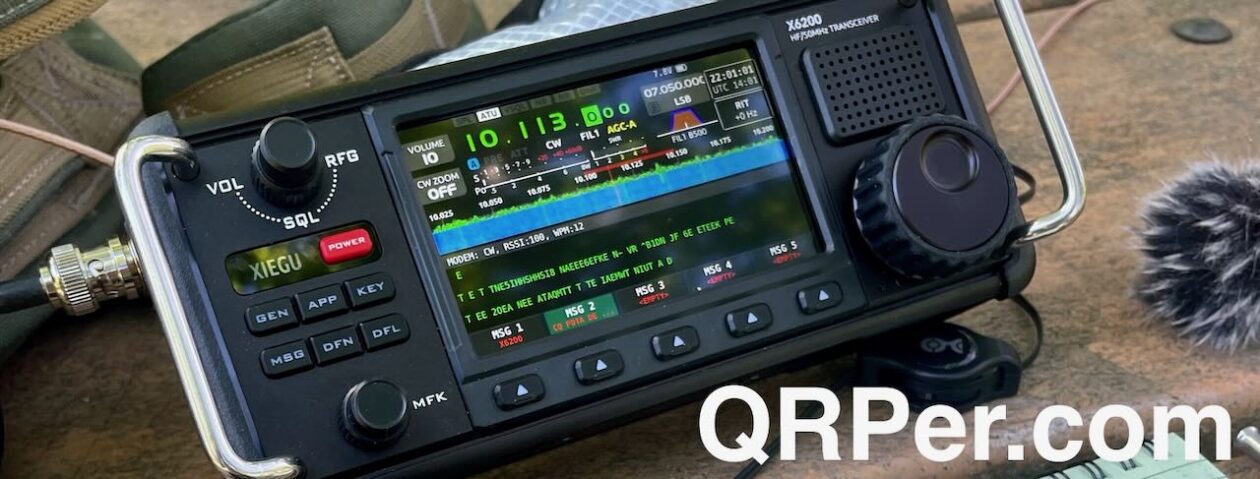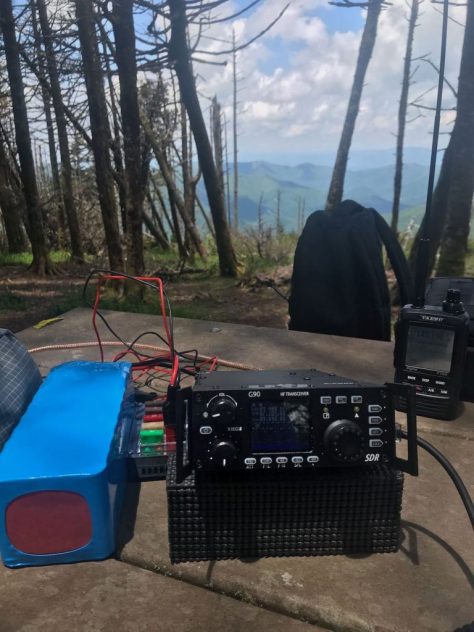Many thanks to Doug (KO4WDE) for sharing the following guest post:
POTA and FBLA
by Doug (KO4WDE)
I have recently found myself fully immersed in the world of Future Business Leaders of America, as my wife is the chapter leader for the middle school where we teach. She started the program with just a handful of kids, and they performed so well their first year that six students qualified for national competition in Atlanta, Georgia last year.
To save money, and help provide this experience, we loaded them in our camper and took to the road. Fast forward to this year and they have continued to grow and develop to the point where they now have more than twenty four members! Now here’s the cool part: they didn’t just grow, they have developed into a powerhouse of Kentucky’s FBLA. Of the twenty four members, fifteen placed either 1st, 2nd, or 3rd at the state level competitions and qualified for national competition in Orlando Florida this summer. Of those fifteen, eleven went to Florida.
The costs for this trip were huge. Fuel alone for the vehicles to get us there was nearly $1000, and lodging, registration fees, and food drove the cost per student to well above $1500 per student. The students voted that they would not go unless they could all go. So they hit their computers and applied for grants and scholarships. They were successful in obtaining a local grant for $3500 to cover their registration fees, and came up with a battle plan for fundraising as much as possible. They formed a team that would go out into the community and present to local business owners in efforts to gain sponsorships to help lower the cost of the trip.
Goal Achieved
To say that they were successful was an understatement. The students were able to gain enough financial support to lower the cost of the trip to $300 each. This includes opportunities for the kids, (some of whom have never been out of Kentucky) to see the ocean, and experience many attractions that Orlando has to offer including Universal Studios and downtown St. Augustine.
That Ocean experience is where POTA plays a part. Our travel plan had us staying at Anastasia State Park (US-1832) for two nights. A couple of the FBLA members attending are also members of the School’s radio club (KQ4CWT) and were looking forward to the club’s first POTA activation (although the ocean was far more fun for them). I had not activated Florida myself and was greatly looking forward to the experience.
Traveling with fourteen people total, in two vehicles (a Nissan Armada, and a Honda Pilot) space is extremely limited so I started the process of streamlining several separate systems into one specific mission bag.
The Field Kit
The host radio was my Xiegu G90 kit seen here combined with a small folding camp table and a Wolf River Coils vertical antenna to use on the beach. My G90 kit is designed to be as simple possible for voice and digital modes, but it is completely based on using trees and wire antennas to get on the air, and picnic tables to operate from, so a few changes needed to be planned.
The nature of the beach itself is the most important change to plan for: no trees… no wire antennas. I don’t own a mast, so the WRC needed to be in the kit. Secondly, we would be on the beach for our planned activation, so I would need a small portable table to keep the gear out of the sand. I chose a cheap amazon table [QRPer affiliate link] that is small enough to fold up into my host backpack (a maxpedition Riftcore) and sturdy enough to hold the G90 and my Evolve III laptop. Preliminary testing on this little table was promising.

The Bioenno battery can wedge under the table while also supports lowering the center of gravity and freeing up the table top. The radio itself has lost the cooling stand as it was just too big and clunky for my go kit. It now rests on a small laptop stand [affiliate link] that is suspiciously similar to the radioddity version for a quarter of the price. I planned on sitting in the sand, under an umbrella using this little table to activate the park.
The Merging of the Bags
The G90 bag consists of the radio, battery, laptop, coax, power cables and adapters, stand, Digirig and backup wire antennas and tree line kit. The coax has been replaced with RG-316 to save weight but the kit is essentially the same as seen in the article linked.
The Wolf river coil bag is an old camelback hydration pack. It contains the SB-1000 coil, three legs, three radials, a 25 foot run of RG8X, and the whip.
The Riftcore has two main compartments and two secondary compartments. The front the main compartments consist of a large deep area in the back, and a slightly smaller and thinner area directly in front of that. The main compartment holds the table top, the table frame, and the WRC system with just enough room to zip up. The zippered pouch opposite holds the coax.

The second compartment holds the radio, battery, stand, and ground coverings that double as padding and chargers, as well as the evolve III POTApotamus laptop.

The front compartments hold the backup wire antenna, tree kit, power cables and Digirig.

The kit, as planned, was much larger and heavier than the Redrock outdoors bag I’m used to carrying, but I thought it to be better since I would only have to keep up with one bag. Especially since I would be carrying other beach gear out to the beach, and would have the kids with me.
Success All-Around
So how did it go? Success, and major FBLA success!
We arrived in St. Augustine around 7:00pm. The boys and I setup camp, three tents. A boys tent dubbed “Brozone Zero”, a girls tent “The She Shack”, and “Smalls” a small tent for my youngest daughter, my wife and me. The girls took the Armada into town to get pizza for dinner on the beach.
I usually RV camp, but when I do tent camp it’s in a Kelty. Our little tent wasn’t a Kelty. We stayed in a Walmart special 3 man tent while the ladies enjoyed the Kelty tent.
When they arrived back, my wife laughed at our little tent and asked if it was like the magic one in Harry Potter. Bigger on the inside.
It wasn’t.


The kit worked out better than I had planned. I was able to snag eleven SSB contacts between rain storms on the beach. I was unable to sit down and really do an activation because of a change in plans. We planned to stay two nights but we canceled one and moved to the local Hilton to avoid tent camping storms the second night, so it was more of a “set up as fast as you can and get ten” type deal.
The table worked perfectly, although the beach wind blew my WRC vertical over. Propagation was fair on 20 meters and I was able to get my last couple contacts via P2P hunting. I was excited to add Florida to my list of activated states.
Admittedly, it was a fun challenge to setup and get those contacts as fast as possible and repack. I need to pack some flags for the radials in the future.


Once we left the beach for the hotel, radio time was over and I dedicated myself to the FBLA mission at hand. We spent five days competing and exploring Orlando. Our FBLA chapter performed very well overall and my daughter placed 2nd in the nation for her performance in the learning strategies competition.
My lovely wife was named the middle school chapter advisor of the year! We had many, many more successes across the event but we will learn final scores in August.


This adventure was so much fun. It was very tiring, but worth every second of work to make it happen, and of course it’s always okay to sneak a little radio wherever you go.
73!
Doug (KO4WDE)





















































